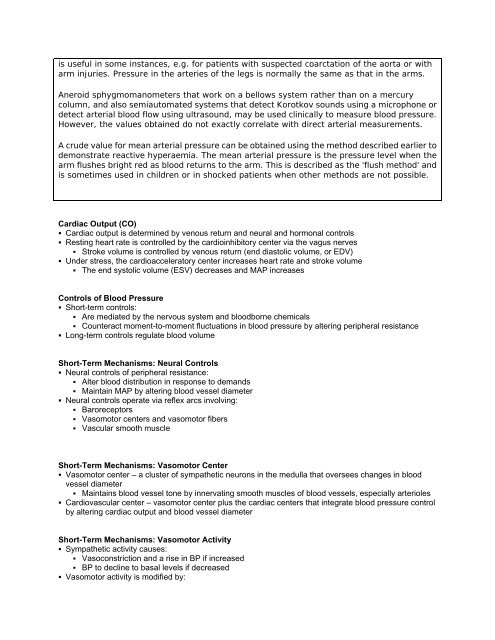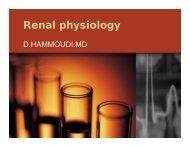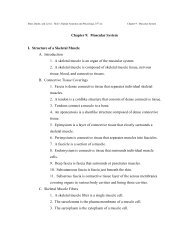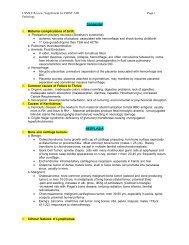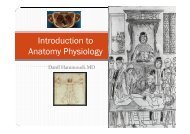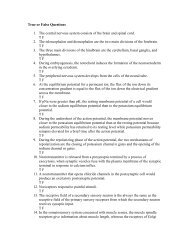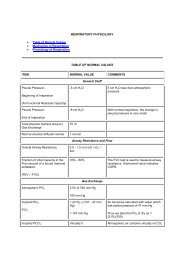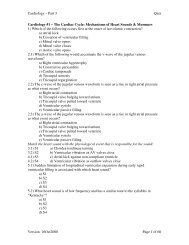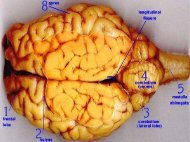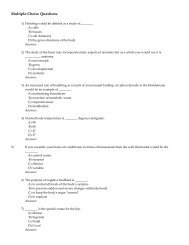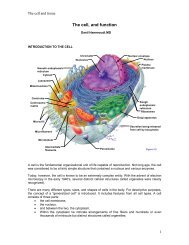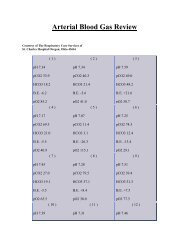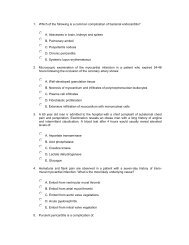Blood Vessels - Sinoe medical homepage.
Blood Vessels - Sinoe medical homepage.
Blood Vessels - Sinoe medical homepage.
You also want an ePaper? Increase the reach of your titles
YUMPU automatically turns print PDFs into web optimized ePapers that Google loves.
is useful in some instances, e.g. for patients with suspected coarctation of the aorta or witharm injuries. Pressure in the arteries of the legs is normally the same as that in the arms.Aneroid sphygmomanometers that work on a bellows system rather than on a mercurycolumn, and also semiautomated systems that detect Korotkov sounds using a microphone ordetect arterial blood flow using ultrasound, may be used clinically to measure blood pressure.However, the values obtained do not exactly correlate with direct arterial measurements.A crude value for mean arterial pressure can be obtained using the method described earlier todemonstrate reactive hyperaemia. The mean arterial pressure is the pressure level when thearm flushes bright red as blood returns to the arm. This is described as the 'flush method' andis sometimes used in children or in shocked patients when other methods are not possible.Cardiac Output (CO)• Cardiac output is determined by venous return and neural and hormonal controls• Resting heart rate is controlled by the cardioinhibitory center via the vagus nerves• Stroke volume is controlled by venous return (end diastolic volume, or EDV)• Under stress, the cardioacceleratory center increases heart rate and stroke volume• The end systolic volume (ESV) decreases and MAP increasesControls of <strong>Blood</strong> Pressure• Short-term controls:• Are mediated by the nervous system and bloodborne chemicals• Counteract moment-to-moment fluctuations in blood pressure by altering peripheral resistance• Long-term controls regulate blood volumeShort-Term Mechanisms: Neural Controls• Neural controls of peripheral resistance:• Alter blood distribution in response to demands• Maintain MAP by altering blood vessel diameter• Neural controls operate via reflex arcs involving:• Baroreceptors• Vasomotor centers and vasomotor fibers• Vascular smooth muscleShort-Term Mechanisms: Vasomotor Center• Vasomotor center – a cluster of sympathetic neurons in the medulla that oversees changes in bloodvessel diameter• Maintains blood vessel tone by innervating smooth muscles of blood vessels, especially arterioles• Cardiovascular center – vasomotor center plus the cardiac centers that integrate blood pressure controlby altering cardiac output and blood vessel diameterShort-Term Mechanisms: Vasomotor Activity• Sympathetic activity causes:• Vasoconstriction and a rise in BP if increased• BP to decline to basal levels if decreased• Vasomotor activity is modified by:


